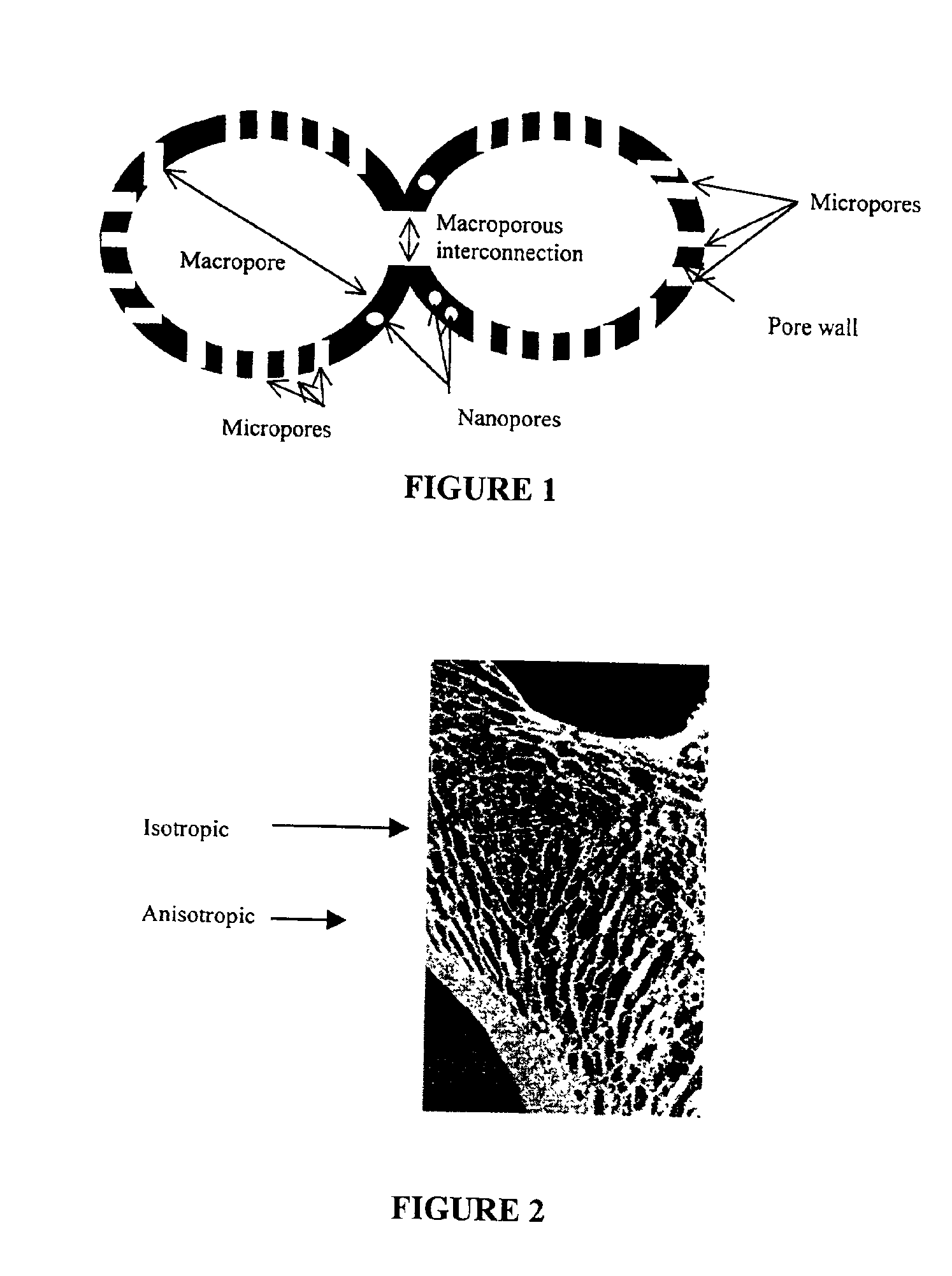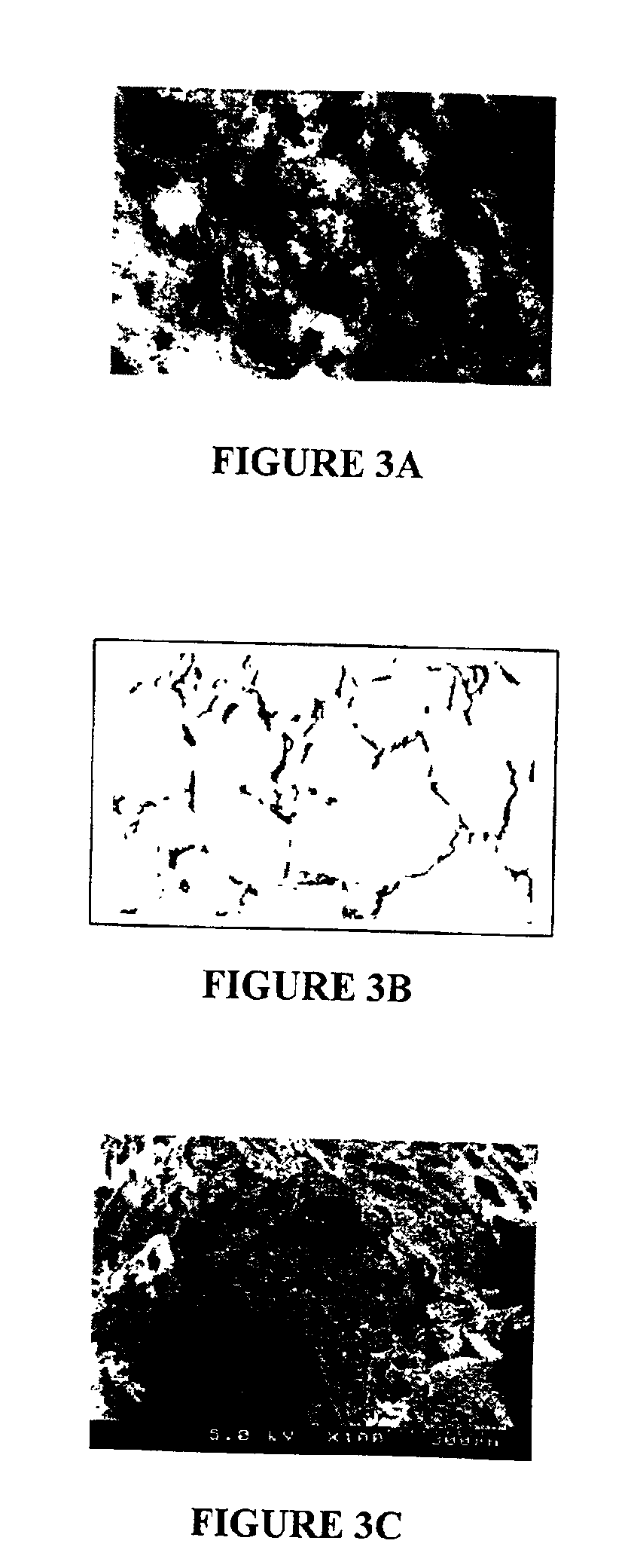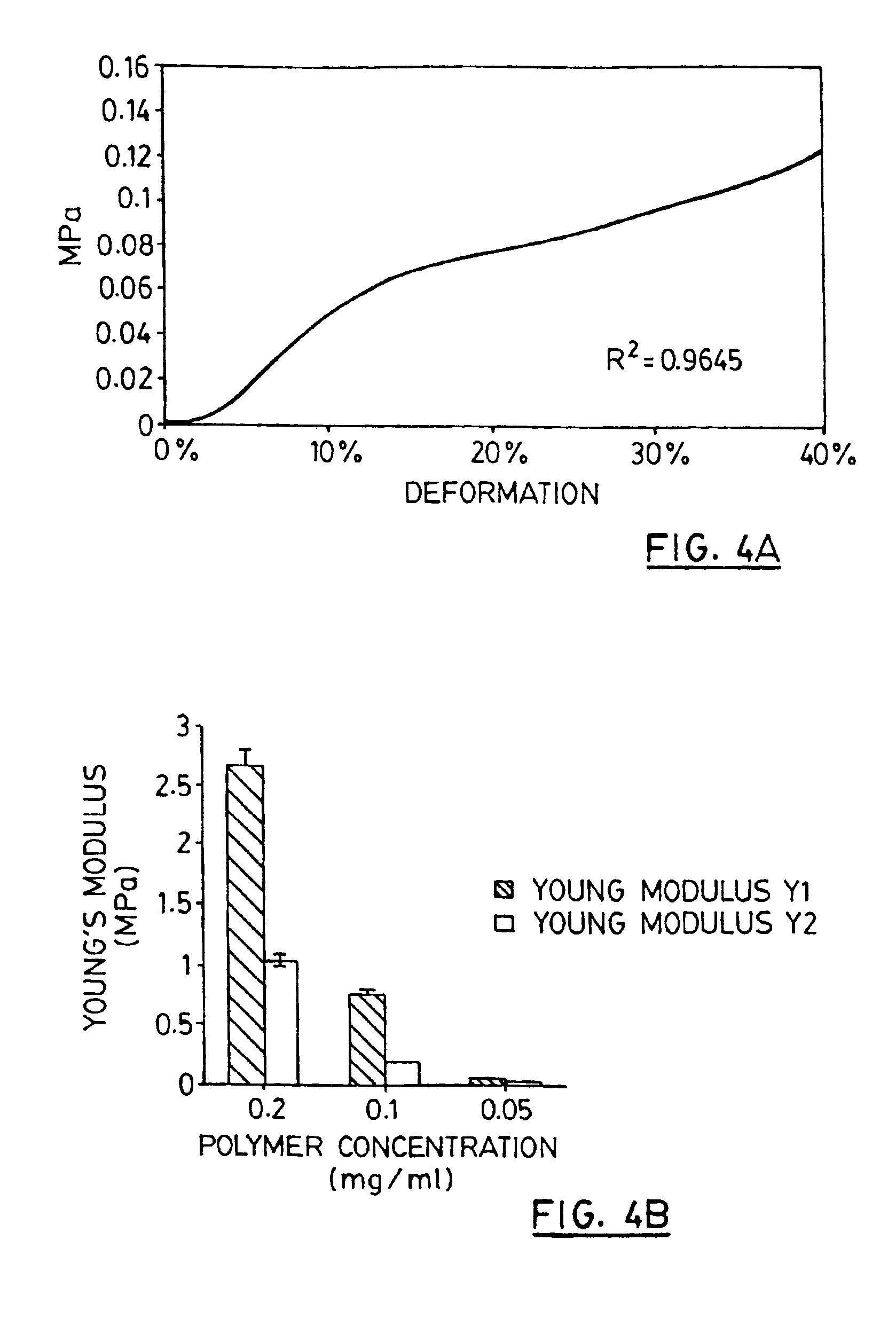Macroporous polymer scaffold containing calcium phosphate particles
a polymer scaffold and calcium phosphate technology, applied in the field of biodegradable polymer scaffolds, can solve the problems of insufficient cell growth, ceramic filler majority is non-biodegradable, and polymer scaffold preparation is difficul
- Summary
- Abstract
- Description
- Claims
- Application Information
AI Technical Summary
Problems solved by technology
Method used
Image
Examples
example 1
Preparation of a PLGA 76:25 Polymer Scaffold
[0085]A PLGA 75:25 polymer scaffold in accordance with the present invention was prepared using PLGA 75:25 (obtained from Birmingham Polymer Inc), having an inherent viscosity of 0.87 dL / g. One ml of 0.1 g / ml of PLGA 75:25 in DMSO was mixed with 2 g of glucose crystals (particle size ranging from 0.8 mm to 2 mm) in an aluminum mold. The PLGA 75:25-DMSO mixture was cooled to −20° C. This temperature of the PLGA 75:25-DMSO mixture is referred to Tmix. The frozen PLGA 75:25 blocks were then immersed in an ice-water slurry of ddH2O at 0° C., which is a non-solvent for the polymer. This temperature of the water is referred to Tnonsolvent. The blocks remained in ddH2O for 48 hours during which the ddH2O was changed approximately every 8 hours. The obtained scaffolds were then removed from the water, vacuum-dried for 72 h at 0.01 mm Hg and stored at 4° C. in a desiccator under vacuum until use. Scaffolds obtained using the above mentioned conditi...
example 2
Effect of Polymer Concentration on Polymer Scaffold Structure
[0094]The effect of PLGA 75:25 concentration in DMSO on the structure of the resulting polymer scaffold was determined using the protocol outlined in detail in Example 1. Three different concentrations of PLGA 75:25 in DMSO (0.05 g / ml, 0.1 g / ml and 0.2 g / ml) were used to make polymer matrices while all other conditions were maintained constant as described in Example 1.
[0095]Each of the polymer scaffolds prepared were cut in half using a razor blade. A skin structure was found on each regardless of the starting concentration of PLGA 75:25 in DMSO. The mechanical properties of the 3 different polymer scaffolds were assessed and are illustrated in FIG. 4B. A significant decrease in Young's modulus was observed in the polymer scaffold prepared using the PLGA in DMSO of 0.05 mg / ml while the stiffest scaffold was obtained with a PLGA 75:25 concentration of 2 mg / ml.
[0096]These scaffolds were also observed under light microscopy ...
example 3
Effect of the, Particles on Polymer Scaffold Structure
[0097]The effect on polymer scaffold structure of both varying the amount and size of the glucose particles admixed with the PLGA polymer was determined as follows. Differing amounts of glucose particles (0.5 g, 1 g and 2 g) were separately admixed with 1 ml polymer solution, maintaining all other conditions as described in Example 1 constant. The effect of particle size on the final scaffold morphology was also assessed by using the following sieved particles: (standard testing sieves, VWR, West Chester, Pa.): 1) NaCl crystals (<0.35 mm), 2) sucrose crystals (0.54 mm<crystal size<0.8 mm) and 3) glucose crystals (0.8 mm<crystal size<2 mm). The resulting polymer scaffolds were observed by light microscopy. When mixing the polymer solution with the particulates, it was seen that for small amounts of particulates (i.e. 0.5 g / ml), the polymer solution was not fully immersed in the particulate bed. This layer of polymer solution resul...
PUM
| Property | Measurement | Unit |
|---|---|---|
| Length | aaaaa | aaaaa |
| Fraction | aaaaa | aaaaa |
| Fraction | aaaaa | aaaaa |
Abstract
Description
Claims
Application Information
 Login to View More
Login to View More - R&D
- Intellectual Property
- Life Sciences
- Materials
- Tech Scout
- Unparalleled Data Quality
- Higher Quality Content
- 60% Fewer Hallucinations
Browse by: Latest US Patents, China's latest patents, Technical Efficacy Thesaurus, Application Domain, Technology Topic, Popular Technical Reports.
© 2025 PatSnap. All rights reserved.Legal|Privacy policy|Modern Slavery Act Transparency Statement|Sitemap|About US| Contact US: help@patsnap.com



